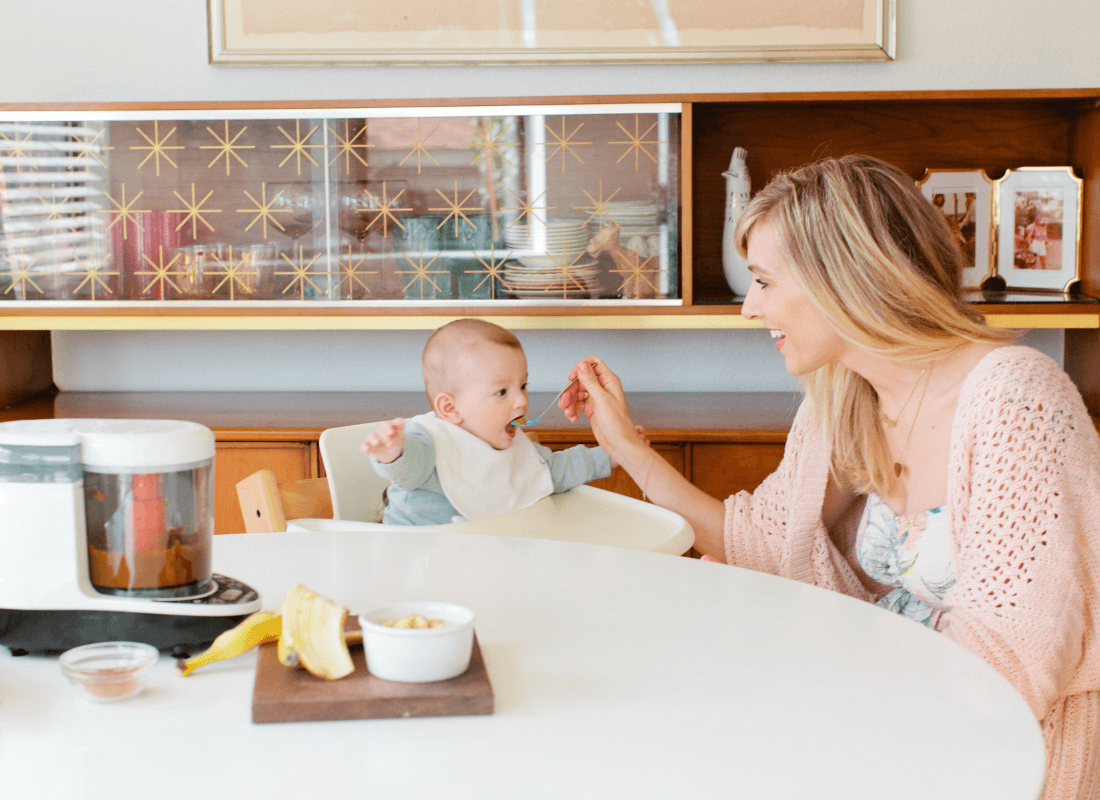
Is it Worth Making your Own Baby Food?
|
|
Time to read 4 min
|
|
Time to read 4 min
For many parents, giving their baby the best possible start includes thinking carefully about what goes into their little one’s meals. With so many ready-made options on the market, you might be wondering: is it worth making your own baby food?
The answer, for many families, is yes—and it may be easier than you think.
There are plenty of reasons why parents choose to make their own baby food at home. First and foremost, it gives you full control over what your baby is eating—no hidden preservatives, added sugars, or artificial ingredients.
It can also work out to be more cost-effective than buying jars or pouches, especially when using ingredients you already have in your kitchen. Plus, homemade meals allow you to tailor flavours and textures to your baby’s stage and preferences, and to introduce a broader variety of fruits, vegetables, and other foods.
When you’re just beginning, simple single-ingredient purees are a great way to go. These are easy for babies to digest and can help you spot any potential allergies. A few parent favourites include:
When making your own baby food, it's important to avoid certain steps and ingredients to ensure the safety and health of your baby:
Here are some essentials to help you confidently prepare homemade baby food:
If you’re looking for a quicker, more streamlined approach, the Baby Brezza One Step Food Maker Deluxe combines multiple steps into one easy process. Unlike many other baby food makers, it automatically steams and blends your ingredients in one step, it steams and purees in the same container at the touch of a button—saving time, dishes, and kitchen space. You can also adjust the texture to suit your baby’s stage, whether you’re making smooth purees, soft mashes, or gentle chunks.
To make storage and serving even more convenient, it also comes with 3 reusable food pouches and 3 filling funnels. These are ideal for portioning out meals, storing them in the fridge or freezer, and serving without mess—perfect for busy days at home or when you're out and about.
Start with fresh, high-quality fruits and vegetables.. Begin with single ingredients so you can watch for any signs of intolerance or allergy.
Always wash your hands before preparing baby food. Rinse all fruits and vegetables well under cold running water—even those with skins or peels you plan to remove. Peel tougher skins, remove seeds or pits, and cut ingredients into small chunks to ensure even cooking.
Steaming is the preferred method for cooking baby food, as it preserves more nutrients than boiling. However, baking, or roasting can also be used, depending on the ingredient. Cook the food until it’s very soft and can be easily mashed with a fork. This is especially important for younger babies who are just starting solids.
For younger babies (around 6 months), you’ll want a very smooth puree. Use a blender, food processor, or hand blender to achieve a silky texture. Add cooled, boiled water, breast milk, or formula to thin the puree if needed.
Allow the food to cool slightly before transferring it into containers. Divide it into small, baby-sized portions to avoid waste. Ice cube trays work well for freezing small amounts—just pop the cubes into labelled freezer bags once frozen.
Making your own baby food is a great way to support your baby’s nutritional needs while discovering what they enjoy at each stage. With just a few simple ingredients, some basic tools, and a little planning, you can prepare meals that are perfectly suited to their age and preferences. Tools like the Baby Brezza Food Maker Deluxe make the process even easier, taking the hassle out of homemade feeding and helping you feel confident in what you're serving. If you’re thinking about giving it a try, you can start small and build a routine that works for you and your baby. Visit our Meet our Weaning Expert page for extra tips and baby friendly recipes to get you started on your homemade baby food journey!



